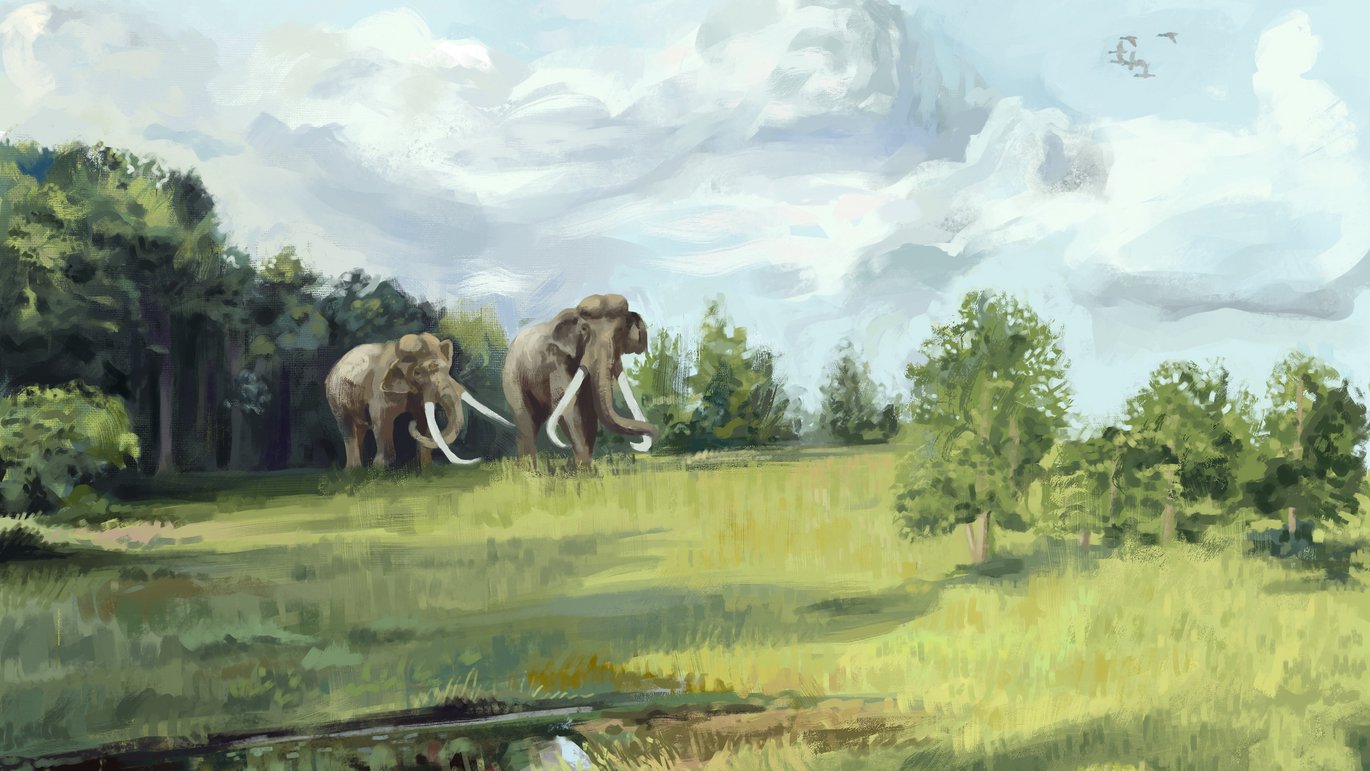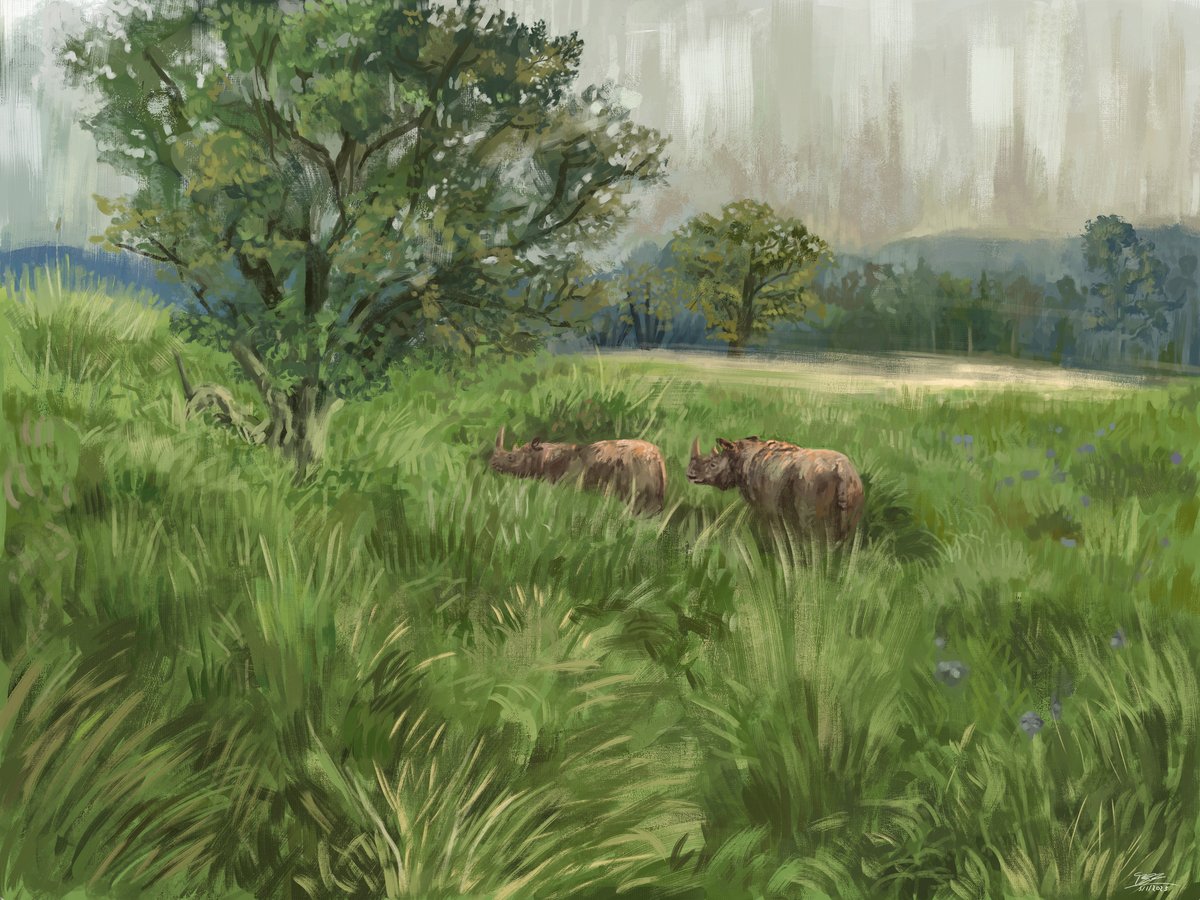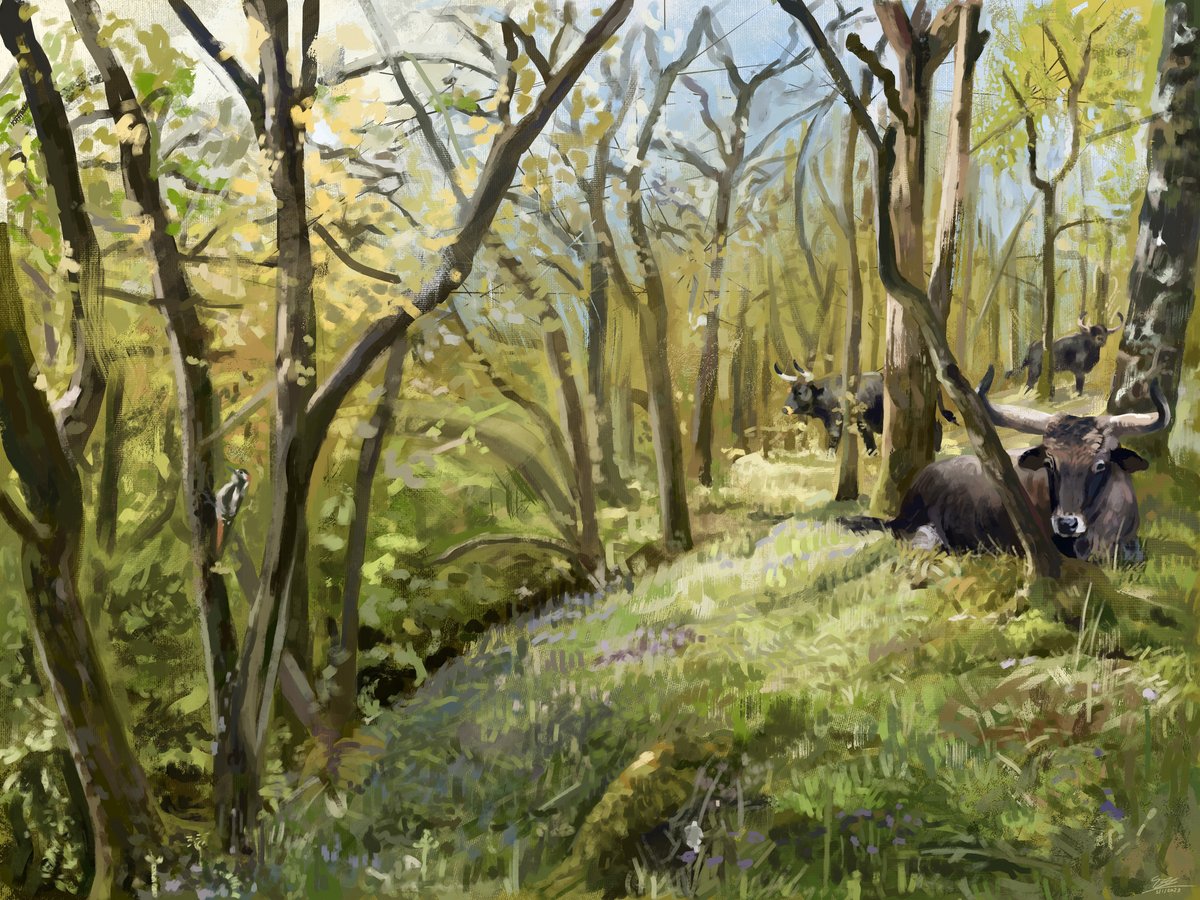Europe was not covered by dense forest before the arrival of modern humans
For decades, we believed that outside ice ages Europe was mostly covered by dense forest before the arrival of modern humans. Now, a new study shows that there was far more open and semi-open vegetation than conventionally expected.

Textbooks on biology and forestry make it clear that large parts of Europe would naturally be covered by dense forests.
The textbook narrative is that our ancestors felled the forests, drained the swamps and cultivated the heathland. In other words, they created the varied landscapes of meadows, heaths and grasslands that characterized our cultural landscapes before the advent of modern agriculture.
But new research from Aarhus University suggests that this is not the case. Elena Pearce, postdoc at the Department of Biology at Aarhus University, and the lead author of the study explains.
“The idea that the landscape was covered by dense forest across most of the continent is simply not right. Our results show that we need to reassess our view of what European nature is," she says, and her colleague and co-author Professor Jens-Christian Svenning continues:
“Nature during the last interglacial period – a period with a mild climate similar to today, but before modern humans arrived - was full of variation. Importantly, the landscapes harboured large amounts of open and semi-open vegetation with shrubs, light-demanding trees and herbs alongside stands of tall-growing shade trees.”
Glacial and interglacial periods
Variations in the Earth's orbit around the sun and shifts in the tectonic plates mean that our planet is impacted by long periods with colder temperatures. We call these periods ice ages or glacial periods.
Researchers agree that there have been at least five major glacial periods during the Earth's four-billion-year history. The earliest glacial period was about 2 billion years ago and lasted for around 300 million years.
Although it may seem confusing, we are actually in such a major glacial period right now. Researchers also divide the glacial periods into cold and warm periods, namely the individual ice ages and intermittent warmer periods, the interglacials
The current glacial period has lasted for almost 2.6 million years, but we are currently in an interglacial period, now being exacerbated and likely prolonged by human greenhouse gas emissions. The study is about the previous interglacial period, which lasted from 129,000 years ago to around 115,000 years ago. In Europe, this interglacial period is called Eem.
Sources: National Geographic
Ancient pollen samples reveal what nature was like
Samples of ancient pollen helped the research team identify which plants grew more than 100,000 years ago in the last interglacial period.
The research group integrated data from pollen samples from large parts of Europe. The samples reveal that plants that do not thrive in dense forest often constituted large components of the vegetation.
“Tall-growing shade trees like spruce, linden, beech and hornbeam will be most prevalent in dense forests. However, the results show that hazel often covered large areas of the landscapes. Hazel is a bush that doesn’t grow in large quantities in dense forest,” says Jens-Christian Svenning.
In the world of plants, competition for sunlight is fierce. The trees that reach highest with their crowns can capture the most sunlight and win that competition. In beech forests, trees take almost all the sunlight. This means that other, smaller trees and shrubs, such as hazel, cannot grow in a beech forest.
“Hazel thrives in the open countryside and in open or disturbed forest, and tolerates disturbance from large animals. Whereas species like beech and spruce often are severely damaged or killed by cutting or browsing, hazel can manage without problems. Even if you cut down a hazel, it will still produce lots of new shoots,” he says.
“For this reason, hazel was often very common in historical coppice woodlands”.

What pollen can reveal about the past
Almost all trees, flowers and shrubs give off pollen. Pollen is to plants what sperm cells are to animals. In order for a plant to seed, its egg cells must be pollinated.
Pollen is spread by the wind or by insects.
A lot of pollen lands on the ground, where it cannot pollinate other plants. Instead, it is eaten by insects or degraded by microorganisms. However, a small amount of pollen lands in lakes, bogs or streams, where it falls to the seabed.
Below the surface, there is often no oxygen and no life, and the pollen is preserved over hundreds of thousands of years in the soil layers.
By looking at the composition of different types of pollen in the soil layers of ancient, buried wetlands, researchers can deduce what the vegetation looked like more than 100,000 years ago.
Large animals kept the landscape open
So there are indications that Europe was not covered by dense forest before humans came into existence. But what did the landscape actually look like?
According to calculations from the new study, somewhere between 50 and 75 per cent of the landscape was covered by open or semi-open vegetation. And this is most likely due to the large mammals that lived at that time, explains Jens-Christian Svenning.
"We know that a lot of large animals lived in Europe at that time. Aurochs, horses, bison, elephants and rhinos. They must have consumed large amounts of plant biomass and thereby had the capacity to keep the tree-growth in check," he says and continues:
"Of course, it’s also likely that other factors such as floods and forest fires also played a part. But there’s no evidence to suggest that this caused enough disturbance. For example, forest fires encourage pine trees, but mostly we did not find pine as a dominant species.”
Although the research group cannot be 100 percent certain about the extent to which large animals were behind the open areas, there are strong indications that they were. Firstly, large animals such as bison have exactly that effect in areas where they are still found in European forests. Furthermore, beetle fossils from the last interglacial period also show that many large animals lived at that time.
“We have looked at a number of finds of beetle fossils from that time in the UK. Although there are beetle species that thrive in forests with frequent forest fires, we found none of them in the fossil data. Instead, we found large quantities dung beetles, and this shows that parts of the landscape have been densely populated by large herbivores," he says.

Merck's rhinoceros with pollen between its teeth
There are many indications that large animals kept the landscape varied before humans came, with large areas of open and semi-open vegetation.
A very special study from Poland further underlines this theory, says Jens-Christian Svenning.
"In Poland, researchers have taken a closer look at fossils from Merck’s rhinoceros to see what this large animal lived on. They found remnants of pollen and twigs between its teeth, and when they analysed them, they could see that a large amount came from hazel,” he says and continues:
“So the rhinoceros has trudged around eating branches and leaves from hazel bushes. This supports the theory that the large animals have affected the vegetation, perhaps just like historical coppice woodlands. At the same time, marks of its teeth suggest it had foraged a lot on grass and sedges through its life time.”

An argument for rewilding
Not only do we need to rewrite the biology books, but the new findings provide new data to support trophic rewilding, which is the restoration of biodiverse, self-regulated ecosystems via the re-establishment of food-web processes, notably as mediated by wild megafauna species.
The results in the study support that large animals have an essential role to play in restoration, as Elena Pearce explains.
"Now we know that there was a great deal of variation in the landscape. Everything suggests that this variation arose because of large animals affecting the vegetation structure. Many of the large animals from the interglacial period are now extinct, but we still have bison, horses and oxen,” she says and concludes:
“Without large animals, natural areas become dominated by dense vegetation, in which many species of plants and butterflies, for example, cannot thrive. Therefore, it’s important we restore large animals to the ecosystems if we are to encourage biodiversity.”
About the research
Type of study:
Empirical study of existing data
External funding:
The study has been supported by EU Horizon funds, the Villum Foundation, the Danish National Research Foundation, Independent Research Fund Denmark and the Novo Nordisk Foundation.
Conflicts of interest:
The researchers declare that there are no conflicts of interest in connection with this research.
Link to the scientific article:
Substantial light woodland and open vegetation characterized the temperate forest biome before Homo sapiens (link kommer)
Contact information:
Jens-Christian Svenning
Professor
Centre for Ecological Dynamics in a Novel Biosphere (ECONOVO) at the Department of Biology
Email: svenning@bios.au.dk
Tel.: +45 28 99 23 04
Elena Pearce
Postdoc
Centre for Ecological Dynamics in a Novel Biosphere (ECONOVO) at the Department of Biology
Email: elena.pearce@bio.au.dk
Jeppe Kyhne Knudsen
Journalist and science communicator
Email: jkk@au.dk
Tel.: +45 93 50 81 48
